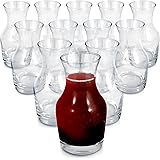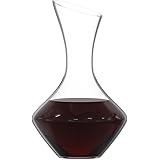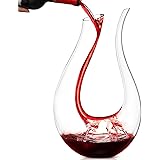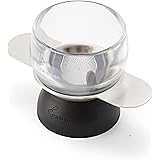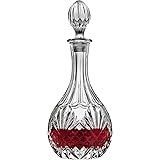Embarking on the journey of making your own wine at home is an incredibly rewarding endeavor, promising both significant savings and the satisfaction of crafting a personalized vintage. Many prospective home winemakers, however, often perceive the initial investment as a substantial barrier. They might assume the most significant expense lies in the intricate process itself or the ingredients. Yet, as the accompanying video insightfully reveals, the surprising truth is that the single largest initial cost of making wine at home isn’t what you might think; it’s often the glassware.
This reality can be a significant deterrent if not properly understood. Fortunately, starting your home winemaking adventure doesn’t have to break the bank. By implementing strategic cost-saving measures and understanding the true long-term economics, you can cultivate a thriving home winery for a fraction of the perceived cost, ultimately producing wine that often surpasses store-bought varieties in both quality and value.
Demystifying the Initial Home Winemaking Costs: The Glassware Surprise
The core equipment required to initiate home winemaking can seem daunting at first glance. However, the most consistent and often overlooked expense is indeed the glass itself—specifically, wine bottles and glass carboys. These items, crucial for fermentation, aging, and eventual storage, carry a significant upfront price tag when purchased new.
Strategic Cost-Saving Measures for Equipment Acquisition
Forethought and a little resourcefulness can dramatically reduce your initial investment in winemaking equipment. There are several avenues to explore for sourcing essential items without paying premium prices:
- The Used Market: A Treasure Trove for Winemakers. Platforms like Kijiji, Facebook Marketplace, or local classifieds are invaluable resources. Imagine if you could acquire a complete winemaking setup, including carboys, fermenters, and even a corker, for a mere fraction of its new retail cost. This is entirely possible in the used market, where individuals often sell their equipment after upgrading or discontinuing the hobby. It’s a prime opportunity to find essential winemaking supplies such as glass carboys and primary fermenters at heavily discounted rates.
- Local Brew Shops vs. Online Retailers. While online giants like Amazon offer convenience, local brew shops can often provide a more competitive edge for starter kits and personalized advice. The video highlights a compelling example: a comprehensive winemaking starter kit, priced at approximately $205 online, could be secured for about $145 at a local specialty store. This significant difference of nearly $60 underscores the importance of checking local options, which often foster community and offer better deals on essential home winemaking equipment.
- Bulk Buying for Bottles. When new wine bottles are necessary, volume discounts become your best friend. Instead of purchasing small packs, which can cost around $25-$26 for 12 bottles, consider larger quantities. For instance, a pack of 48 wine bottles might cost only $70, significantly lowering the cost per bottle and making your initial investment in glass much more manageable. This approach is particularly effective for those planning to produce multiple batches or a larger initial yield.
Calculating Your First Batch: The True Cost of Making Wine at Home
To put these figures into perspective, let’s break down the approximate cost for your very first batch of home-made wine, assuming you leverage some of these cost-saving strategies:
- Essential Starter Kit: From a local brew shop, approximately $145. This kit typically includes a primary fermenter, a glass carboy, siphon hoses, an airlock, and a corker – all the basic winemaking equipment needed to get started.
- Wine Bottles: For a batch yielding 28-30 bottles, you’ll need at least 30. Opting for a bulk purchase, such as 48 bottles for $70, provides ample capacity and better value.
- Wine Kit: A quality wine kit, providing the concentrated grape juice and necessary additives, generally costs around $75. While higher-end kits exist, and sales can offer cheaper options, this is a solid average.
Therefore, your total initial outlay for making your first batch of wine could be around $145 (kit) + $70 (bottles) + $75 (wine kit) = **$290**. Given that a standard wine kit yields roughly 28 bottles, this translates to an initial cost of approximately $12.52 per bottle for your very first vintage. While this might seem comparable to some mid-range store-bought wines, it’s crucial to understand that this figure includes the one-time purchase of reusable equipment. The true economic benefit emerges with subsequent batches.
The Long-Term Advantage: Drastically Reduced Costs Per Bottle
The beauty of home winemaking lies in its long-term cost efficiency. Once you have acquired your winemaking equipment, specifically the reusable glass bottles and carboys, these assets dramatically reduce the cost of all subsequent batches. Imagine having a cellar stocked with your own quality wines without the recurring expense of new glass.
Consider the calculation for your second batch:
- Reusable Equipment Cost: $0 (as you already own the fermenters, carboys, corker, and bottles).
- Wine Kit: Approximately $75.
For this subsequent batch, your total cost is merely the price of the wine kit: $75. Divided by 28 bottles, this brings the cost per bottle down to an astonishing **$2.68**. This dramatic reduction highlights the unparalleled value of making wine at home. For less than the price of many budget-tier wines, you are producing a premium product tailored to your taste, enjoying both superior quality and exceptional savings.
Scaling Your Winemaking Operation Smartly
Once you’ve mastered a few batches, you might consider scaling up your home winery. This doesn’t necessitate a massive investment. The key lies in optimizing your existing winemaking equipment and making strategic, minimal additions.
Optimizing Your Setup for Continuous Production
For efficient and continuous production, the video suggests a surprisingly lean setup:
- Two Glass Carboys and One Primary Fermenter: This configuration allows for a seamless cycle. Wine typically spends about two weeks in the primary fermenter before being “racked” (transferred) to a secondary carboy for bulk aging. With two carboys, you can always have one available for the next batch while another is aging.
- Bulk Aging in Carboys: A significant advantage is the ability to bulk age your wine in the carboy itself. By capping it with an airlock, you can allow the wine to mature and develop complex flavors without immediately bottling it. This not only saves on immediate bottling labor but also ensures you only bottle when you have available glass or when the wine is perfectly ready. This method is an excellent way to manage your inventory and maximize the utilization of your existing glass.
If you wish to produce more varieties simultaneously, simply adding one more glass carboy is often sufficient. This allows for increased capacity and flexibility without a substantial increase in your home winemaking costs, as the primary fermenter can be quickly cycled between batches.
Beyond the Kit: Essential Consumables and Optional Enhancements
While the initial equipment and wine kits form the bulk of your expense, there are recurring consumable costs that any home winemaker should account for. These are generally minor but essential for a polished final product.
Consumables for Every Batch
- Corks: Each batch requires a fresh set of corks. For 30 bottles, expect to spend around $5. It’s a small price for sealing and preserving your homemade wine effectively.
- Shrink Caps (Optional): For those who enjoy a professional finish and an easy way to label, shrink caps are an excellent addition. They cost roughly $5 for 30 bottles and help distinguish different vintages or varieties. Many winemakers find that numbering the caps and using a spreadsheet for detailed notes provides excellent organization for their inventory.
It is important to note that corks and caps are typically not included in standard wine kits, necessitating their separate purchase.
Personalizing Your Vintage: Labels and Presentation
While optional, custom labels elevate your homemade wine, making it suitable for gifting or personal branding. Some wine kits might include generic labels, but for a truly unique touch, purchasing or printing your own labels adds a layer of professionalism. These are readily available and affordably priced at local wine shops or online, allowing you to dress up your bottles and create a memorable presentation.
Kits vs. Crafting from Fruit: A Beginner’s Dilemma
The world of home winemaking offers two primary paths: using pre-formulated wine kits or starting from fresh fruit. For beginners, the choice is clear, as the video strongly advocates:
Initially, stick with wine kits. While the idea of crafting wine from scratch using fresh fruit is alluring, it introduces a significantly higher level of complexity and additional costs. Beyond the fruit itself, a fruit-based wine recipe typically requires a host of supplementary ingredients and winemaking supplies:
- Sugar: Often a substantial cost, especially in regions where sugar prices are higher.
- Yeast and Yeast Nutrient: Essential for healthy fermentation.
- Stabilizers: Such as potassium sorbate, to prevent renewed fermentation and spoilage.
- Acid Blend and Tannins: To balance the wine’s flavor profile.
- Pectic Enzyme: To prevent haziness in fruit wines.
- Fruit Bag/Straining Equipment: For separating the fruit solids during fermentation.
Navigating these additional ingredients and processes can be overwhelming for a novice. Consequently, starting with a few wine kits allows you to master the fundamental techniques of fermentation, racking, and bottling without the added complexities. Once you are confident with the system, exploring fruit-based recipes becomes a natural and exciting progression.
Ultimately, the value of making your own wine at home far transcends the initial cost. The wines produced from kits often surpass the quality of store-bought equivalents, all while coming in at a fraction of the price. Furthermore, the ability to consistently replicate a favorite batch and share your unique creations as thoughtful, personalized gifts adds an immeasurable layer of satisfaction to the entire experience.


